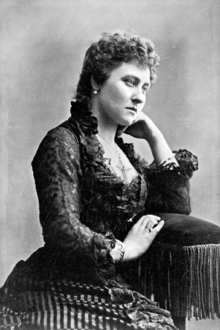Did you know that the secret grandson of Queen Victoria was found dead next to the train tracks in Montreal West on December 10, 1907? Henry Locock was a 39-year-old British army officer on his way to Kelowna, BC to meet his birth father, Walter Stirling, tutor to Princess Louise when she was only 19 years old. Stirling had a fling with Princess Louise, Queen Victoria's sixth child of nine children. Henry Locock firmly believed Stirling to be his real father. He had been adopted in 1867 by Dr Charles Locock, Queen Victoria's accoucher or gynecologist. Princess Louise had given up the child to avoid a scandal before she married the Marquess of Lorne, who was later posted to Canada as Governor General.
Henry’s grandson, Nick Locock, tried to exhume his grandfather's body buried in a Kent churchyard for a DNA test in 2004 to prove that Henry was indeed related to Queen Victoria, but a judge under pressure from the Royal Family refused the request. The DNA results of the grandfather would have been compared to the readily available DNA of the nine skeletons found in a shallow grave in Russia, including those of Alexandra, the Tsarina of Russia, a daughter to Princess Alice and a granddaughter to Queen Victoria.
What an incredible story this is. I have just finished reading "The Mystery of Princess Louise", Queen Victoria's rebellious daughter by Lucinda Hawksley. This is an excellent biography of that wonderful woman who charmed Canadians when she came to Canada in 1878 with her husband, the Marquess of Lorne. Louise was the poster girl for Queen Victoria's family after the death of Prince Albert. She was the prettiest daughter, the artist in the family, and everyone's favourite aunt in the Royal Family. She was trilingual and spoke English, French and German. She was a professional artist and sculptor, and she dressed in a pre-Raphaelite style that was fashionable in a way that none of the other princesses were.
Lucinda Hawksley describes the princess: "Louise was a powerful voice for women of her generation. She was a princess who sought not to be 'royal', a Victorian woman who strove to break into a masculine world, and a fiery, intriguing, often confusing personality. She challenges many preconceptions what we, in the twenty-first century, have of women who lived under the long reign of Princess Louise's formidable and - it has to be admitted - often extremely unpleasant mother."
Hawksley's book tells the tale of her illegitimate son Henry born out of wedlock when she was just 19 years old. It tells the tale of Louise's long term love affair with the Austrian sculptor Sir Joseph Edgar Boehm and his death in her arms as they were having sex and how her presence in Boehm's studio was covered up in the press. It tells the tale of Louise's unhappy marriage to Lorne who was a commoner and a promiscuous homosexual from his days at Eton College. It tells the tale of Canada's love affair with Princess Louise and how the province of Alberta (Louise Caroline Alberta), Lake Louise, the Louise Embankment in Quebec City and along with various regiments are all named after her. Princess Louise and her husband were responsible for launching the Royal Canadian Academy of the Arts and the National Gallery of Canada in 1880.
Hawksley's research is very thorough and her talent for getting to the truth through the maze of contradictions is quite remarkable. She has been criticized in the press for going too far in her speculations about Princess Louise's sex life, but I found her sifting of the evidence in the numerous letters that were exchanged at the time quite convincing. Of course, none of this can be proved, but it is important for historians to go beyond the official version of events and get a feel for how things really were in Victorian England. Princess Louise was a woman ahead of her times. She was a champion of women’s and children’s rights long before the most famous suffragists made the cause fashionable. She insisted that boys and girls should be treated equally and worked tirelessly for the creation of better run hospitals and schools.
*Originally posted in March 2022


Comments ()